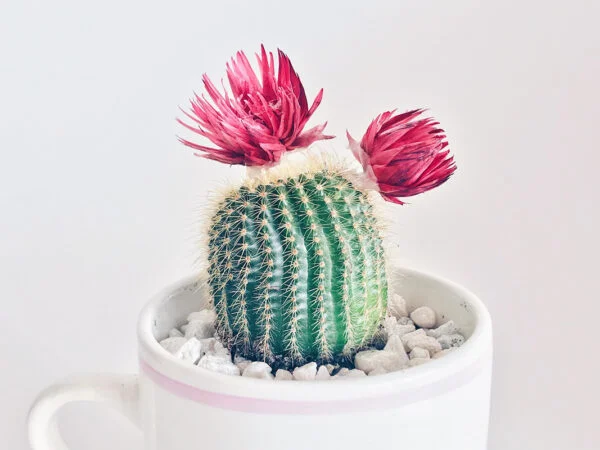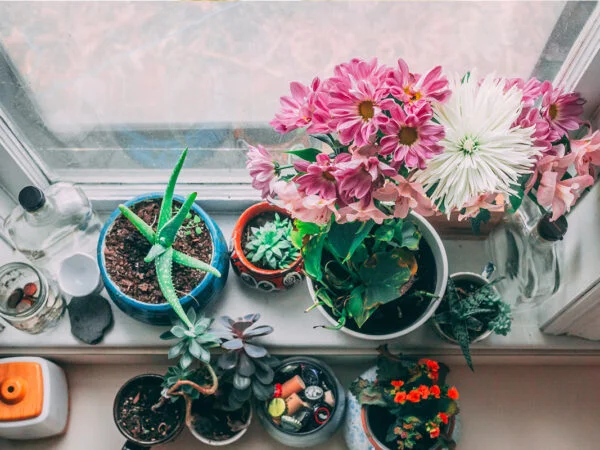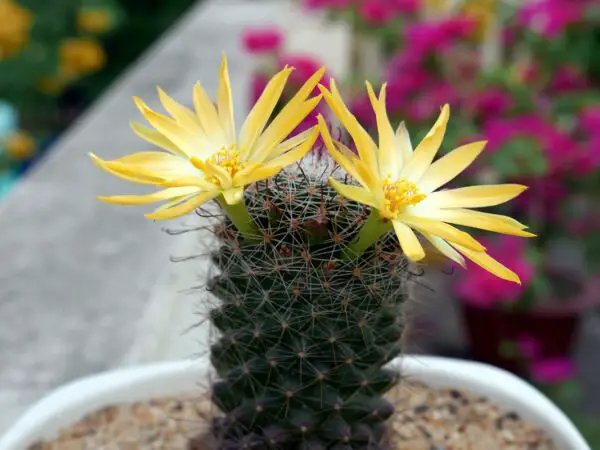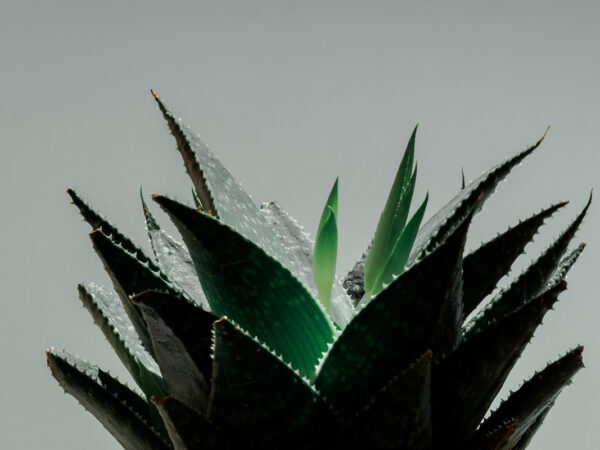Did you know that over 30% of succulents deaths are caused by overwatering? Yes, you read that right. It's a shocking statistic considering the resilient nature of these desert succulents. If you've accidentally drowned your beloved cactus, all hope is not lost. In this guide, we'll dive into the step-by-step art of rescuing an overwatered cactus and nurse it back to health.
We'll explore practical steps and expert tips for identifying and reversing the effects of overwatering on your cactus. From assessing root rot to adjusting watering schedules, we've got you covered with simple yet effective strategies to revive your waterlogged succulent companion. So, if you're facing a soggy situation with your prickly friend, keep reading for a lifeline to save your overwatered cactus from a watery grave.
Key Takeaways
-
Recognize overwatered cacti by observing signs of yellowing, wilting, or softness in the plant.
-
Stop water damage immediately by ceasing all watering and allowing the soil to dry out completely.
-
Address root rot by trimming affected roots, repotting the cactus in well-draining soil, and taking the necessary step.
-
Repot your cactus in a suitable pot with proper drainage to facilitate recovery.
-
Ensure sufficient sunlight for your cactus to aid in its recovery process.
-
Adjust watering practices post-recovery by implementing a "soak and dry" method to prevent overwatering. Step
Recognizing Overwatered Cacti
Signs of Excess Water
Yellowing or translucent skin, soft, mushy texture when touched, and a foul odor emanating from the cactus are clear indicators of overwatering. A healthy cactus should have firm, green skin with no unpleasant smell.
Overwatered cacti may exhibit yellow or translucent patches on their skin due to waterlogged cells. When gently pressed, an overwatered cactus feels soft and mushy instead of firm and turgid.
In addition to physical changes, an overwatered cactus may emit a foul odor caused by rotting tissues. This is a crucial sign that the plant is suffering from excess moisture.
Assessing Damage
Checking for black spots or lesions on the cactus can reveal damage caused by excessive watering. These areas indicate tissue decay resulting from prolonged exposure to water.
Observing wilting or drooping segments in a cactus indicates that it has absorbed more water than it can handle. The weight of the water causes these segments to bend unnaturally as they struggle under the excess moisture load.
Noting any signs of mold or mildew growth on the surface of the soil or even on the body of the cactus itself suggests that it has been subjected to overly wet conditions for an extended period.
Root Examination
Inspecting for brown or black roots is essential in identifying an overwatered succulent. Healthy roots are light-colored and firm while those affected by excess moisture turn dark brown or black due to rotting processes taking place within them.
Identifying any foul smell emanating from the root system signifies root rot—a condition brought about by excessive watering leading to oxygen deprivation in soil which creates ideal conditions for harmful bacteria and fungi growth.
Looking for signs such as slimy texture within roots also points towards root rot—this sliminess is indicative of decaying tissues resulting from prolonged saturation with water.
Stopping Water Damage
Halting Irrigation
If you've identified that your cactus has been overwatered, the first step is to stop all watering immediately. This means no more water until the soil has completely dried out. If there's excess water pooling on top of the soil, carefully remove it to prevent further saturation. Allow the cactus and its soil to dry out entirely before considering watering again.
Soil Drying Techniques
To expedite the drying process, consider using a fan to increase air circulation around the cactus and its pot. Placing the cactus in a well-ventilated area with good airflow can also aid in drying out the soil more quickly. Another effective method is utilizing a dehumidifier in the room where your cactus is located. The dehumidifier will help reduce moisture levels in both the air and soil, expediting the overall drying process.
In addition:
-
Cease all watering immediately.
-
Remove excess water from the soil if possible.
-
Allow sufficient time for complete drying of the soil before resuming watering.
Furthermore:
-
Use a fan or place it in a well-ventilated area for faster drying.
-
Consider employing a dehumidifier to aid in reducing moisture levels.
Addressing Root Rot
Rot Removal Methods
When a cactus is overwatered, it becomes susceptible to root rot, which can be detrimental to its health. To save an overwatered cactus, the first step is to address the root rot by removing the affected areas. This involves trimming away any parts of the roots or stem that appear mushy or discolored using sterile tools such as scissors or pruning shears.
After trimming, applying cinnamon powder to the cut sections can help prevent further infection and promote healing. Cinnamon has natural antifungal properties that aid in combating root rot. Once this is done, allow the cut areas to callus over before replanting the cactus in fresh soil.
Root Reestablishment
The next crucial step in saving an overwatered cactus is to focus on root reestablishment. Repotting the cactus in fresh, well-draining soil is essential for its recovery. Ensure that you choose a pot with drainage holes and use a specialized cactus mix or create your own well-draining soil mixture using materials like sand and perlite.
When repotting, it's important to pay close attention to proper root placement in the new soil medium. Gently position the roots and pack soil around them while providing support for the plant so that it stands upright without causing damage.
Once repotted, provide gentle support for newly planted cacti by avoiding direct sunlight exposure initially until they have acclimated to their new environment.
Repotting Your Cactus
Essential Tools and Materials
When repotting an overwatered cactus, it's crucial to have the right tools and materials on hand. Sterile pruning shears are essential for cutting away any rotted parts of the plant. This helps prevent further spread of the rot. A well-draining potting mix suitable for cacti is necessary to ensure proper drainage and avoid waterlogging. Lastly, having cinnamon powder available is important for treating cut areas on the cactus as it possesses natural antifungal properties.
It's like performing surgery on your cactus; you need sharp, clean tools to remove the infected parts without causing more harm. Imagine giving your cactus a fresh start with new soil that allows excess water to escape easily while providing essential nutrients.
Transferring to Fresh Soil
When transferring an overwatered cactus to fresh soil, several key steps should be followed. First, choose a pot with drainage holes to allow excess water to escape and prevent future overwatering issues. It's also important to ensure that the new soil is completely dry before repotting the cactus into it. This prevents adding more moisture when trying to save an already overwatered plant.
Imagine moving homes; you want everything ready at your new place before making the move so that there’s no added stress or complications during transition.
Promoting Drainage
Promoting proper drainage is vital in preventing future incidents of overwatering for your newly potted cactus. Adding perlite or coarse sand into the potting mix can significantly improve soil drainage by creating air pockets within the mixture that allow excess water to drain away from the roots effectively. Elevating the pot on feet can enhance airflow around and under it, aiding in drying out any excess moisture present in both soil and air around it.
Think of promoting drainage as ensuring there are clear pathways for rainwater during heavy rainfall - you want all paths clear so that no flooding occurs!
Sunlight and Recovery
Sunlight Requirements
Placing the cactus in bright, indirect sunlight is crucial for its recovery. This type of light helps the plant regain its strength without causing further stress. Avoiding direct exposure to intense midday sun is equally important as it can lead to sunburn or dehydration, hindering the recovery process. Providing adequate light is essential for the cactus's overall health and growth.
To ensure that your overwatered cactus receives sufficient sunlight, consider placing it near a south- or east-facing window where it can receive bright, indirect sunlight throughout the day. If such positioning isn't feasible, you may use grow lights specifically designed for indoor plants to supplement natural light.
Preventing Premature Watering
Waiting until the soil is completely dry before watering again plays a pivotal role in saving an overwatered cactus. The roots need time to recover from excess moisture, and premature watering can exacerbate their condition. Utilizing a moisture meter allows you to accurately gauge when the soil has dried out enough to warrant another round of watering.
Exercising caution with watering frequency is key; while underwatering poses risks of its own, overcompensating by watering too frequently after an episode of overwatering can impede recovery efforts. By allowing the soil to dry out thoroughly between waterings, you're providing your cactus with an environment conducive to recuperation.
Watering Practices Post-Recovery
Proper Watering Techniques
It's crucial to adopt proper watering techniques. This involves watering deeply but infrequently, allowing the excess water to drain out completely after each watering session. For instance, you can water your cactus thoroughly until the water starts draining from the bottom of the pot. This ensures that the roots receive adequate moisture without being saturated.
Adjusting your watering schedule based on seasonal changes is also essential for cactus care post-recovery. During summer or warmer months, when evaporation rates are higher, your cactus may require more frequent watering compared to winter months when evaporation slows down.
Careful Monitoring
Carefully monitoring your cactus post-recovery is vital in maintaining its health and preventing overwatering incidents. Regularly keeping track of soil moisture levels enables you to gauge if your plant requires additional hydration or needs time to dry out between watering sessions.
Observing any changes in your cactus's appearance is another critical aspect of careful monitoring. If you notice signs such as yellowing or wilting of the stems, this might indicate overwatering and prompt adjustments to your care routine.
Making necessary adjustments based on monitoring results will help ensure that you maintain a healthy balance in caring for an overwatered cactus post-recovery.
Factors in Overwatering Susceptibility
Cacti's Vulnerability
Cacti are vulnerable to overwatering due to their natural habitat in arid regions. Their roots are not adapted to handle excessive moisture, making it crucial to use well-draining soil when planting them. Proper care involves understanding the signs of overwatering, such as yellow or translucent leaves and a soft, mushy stem.
It's important for cactus owners to be mindful of various environmental factors that can impact their plant's health. For instance, ensuring adequate air circulation around the cactus is essential for preventing moisture buildup. This can be achieved by placing the cactus in an area with good ventilation and avoiding overcrowding with other plants.
Environmental Contributors
Humidity levels play a significant role in the overall well-being of cacti. High humidity can lead to moisture retention around the plant, increasing the risk of overwatering. To mitigate this risk, it's advisable to keep indoor humidity levels low by using a dehumidifier or placing the cactus near a source of airflow.
Maintaining stable temperatures is also crucial for preventing overwatering issues. Extreme temperature fluctuations can affect how quickly soil dries out and may lead to inconsistent watering needs for your cactus. By keeping your plant in an environment with steady temperatures, you can help regulate its water intake more effectively.
Preventative Measures for the Future
Adequate Drainage Solutions
Cacti are vulnerable to overwatering, so it's crucial to provide them with proper drainage. Investigate and address any potential drainage issues by ensuring that the pots have sufficient drainage holes. This will allow excess water to escape, preventing the roots from becoming waterlogged.
Create a suitable environment for optimal drainage by using a well-draining soil mix specifically designed for cacti. This type of soil allows water to pass through quickly, reducing the risk of water accumulation around the roots. Consider adding materials such as perlite or sand to improve soil porosity and enhance drainage.
Eliminate standing water around potted cacti by being mindful of watering techniques. After watering your cactus, make sure there is no residual water sitting in saucers or trays underneath the pot. Stagnant water can lead to root rot and other moisture-related issues.
Monitoring Water Intake
Regularly assess your cactus's hydration needs based on environmental conditions such as temperature and humidity levels. During warmer months or in drier climates, your cactus may require more frequent watering compared to cooler seasons or more humid areas.
Balance hydration requirements with the risk of overwatering by observing your plant closely for signs of distress due to excessive moisture. Look out for symptoms like yellowing or wilting stems, which could indicate overwatering problems.
Tailor your watering frequency according to individual plant needs rather than adhering strictly to a fixed schedule. Some species may thrive with less frequent watering intervals compared to others; therefore, it's essential to understand each specific variety’s unique requirements.
Recovery Timeline Expectations
Time Required for Healing
After addressing the overwatering issue, allow the cactus to recover at its own pace. Patience is key as the healing process may take time. Depending on the severity of the overwatering, the recovery period can vary significantly.
It's essential to allow sufficient time for your cactus to recuperate from overwatering. Be patient and observe gradual improvements in its health. Remember that each plant is unique, so healing times may differ from one cactus to another.
Signs of improvement will start becoming evident as your cactus begins to heal from overwatering. Look out for new growth such as fresh buds or tiny leaves emerging from previously affected areas. This indicates that the plant is recovering and adapting positively.
Signs of Improvement
As your cactus heals, you'll notice a healthy appearance returning. The firmness and resilience that were lost due to excessive watering will gradually reappear in previously affected areas. These are positive changes indicating successful recovery.
Keep an eye out for any signs of new growth such as fresh green shoots or plump, healthy-looking segments on your cactus. This demonstrates that it's bouncing back and thriving after being overwatered.
Closing Thoughts
You've learned how to rescue your overwatered cactus and set it on the path to recovery. By recognizing the signs of overwatering, taking swift action to address root rot, and adjusting your watering practices, you've given your cactus a fighting chance. Remember, patience is key during the recovery process. Just like a sunbathing lizard needs time to soak up the warmth, your cactus needs time to bounce back.
Now it's time to put your newfound knowledge into practice. Keep a close eye on your cactus, adjust its sunlight exposure, and resist the urge to overwater. With proper care and attention, your cactus will soon thrive again. So go ahead, be the hero that saves your overwatered cactus!
Frequently Asked Questions
How do I recognize if my cactus is overwatered?
Look for signs like yellowing or translucent skin, mushy texture, and a musty smell. If the soil feels constantly damp, it's likely overwatered.
What should I do to stop water damage in my overwatered cactus?
Stop watering immediately and remove the excess water from the pot. Let the soil dry out completely before resuming any watering.
How can I address root rot in my overwatered cactus?
Trim off any affected roots using sterilized scissors and repot the cactus in fresh, well-draining soil to prevent further rot.
When should I consider repotting my overwatered cactus?
Wait until the plant has fully recovered before considering repotting. It's best to wait until you see new growth and healthy roots.
What are some preventative measures to avoid overwatering my cactus in the future?
Use pots with drainage holes, choose a well-draining soil mix specifically for cacti, and establish a consistent watering schedule based on your specific environment.
Image Source: Paid image from CANVA




